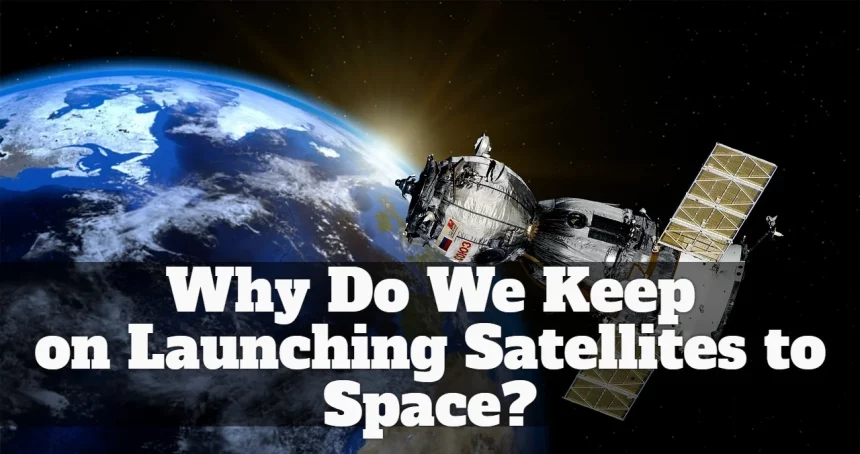In today’s world, the internet is as vital as the air we breathe. It’s also a world where launching satellites into space has become engraved in our daily routines. Yet, have you ever paused to wonder about the purpose behind continually sending these artificial objects into the vast unknown? While we gaze at the night sky with moving white dots representing satellites, the question becomes even more pressing. In this blog, Let’s embark on a journey to explore and unravel the mysteries behind the relentless act of launching satellites.
Launching Satellites: Unraveling the Cosmic Tapestry

Why Do We Need to Launch Satellites to Space?
In the vast field of space, launching satellites has played a pivotal role in shaping our interconnected world. Satellites, the unsung heroes orbiting high above us, play a role in providing global connectivity. As the demand for internet access reaches unprecedented levels, satellite deployment has become a necessity. Think about your last Google search or Netflix binge-watch; those requests likely journeyed through space to a satellite, enabling the seamless data transfer back to Earth.
Starlink Project Pioneering Connectivity?
Enter Elon Musk and SpaceX’s ambitious Starlink project. With the Federal Communications Commission’s green light to launch over 12,000 satellites, Musk aims to meet the surging demand for connectivity. The satellites, propelled into orbit by SpaceX’s Falcon 9 reusable rockets, promise “near-global coverage.” Not to be outdone, Amazon plans to launch 3000 satellites, extending connectivity even to the most remote corners of the world.
- Advertisement -
The countryside regions, once a haven for escape, are no longer exempt from the reach of high-speed internet. The advancement of launching satellites into space opens the door for superfast connections in areas that were once on the fringes of digital connectivity. It seems like a perfect solution, right?
Challenges in the Cosmic arise from Launching Satellites.
However, as we revel in the benefits of launching satellites, we must confront the difficulties they bring. The second section of our exploration sheds light on the darker side of this cosmic endeavor.
Space junk, a term that sounds almost unusual, is a serious concern. With over 19,000 artificial objects in orbit, including approximately 5000 satellites, our neighborhood is becoming littered. The high number of satellites poses challenges when it’s near the end of their operational life or malfunction. While Starlink aims to direct most of its satellites to de-orbit successfully, the reality is not flawless. The first batch had 5% of satellites unresponsive, adding to the growing accumulation of space junk that takes up to 5 years to burn in the atmosphere.
Astronomers, too, raise their concerns. The luminous parade of satellites interferes with their observations, turning the stars into a celestial obstacle course. These metallic machines traverse the night sky, contributing to light pollution, and are notoriously challenging to remove from astronomical images. The astronomical community, though appreciative of efforts by companies like SpaceX to mitigate these impacts, remains wary of the challenges posed by the ever-growing celestial traffic.
Is there a Boundary of the Infinite Space?
The third section of our exploration reflects on the boundaries of infinite space. Despite the vastness of the cosmos, the space available for technology orbiting Earth is limited. The overcrowding of this space, exacerbated by the continuous launching of satellites, raises concerns about collisions and disruptions.
On August 28, 2019, the European Space Agency faced a close call when they had to maneuver their spacecraft ‘Aeolus’ to avoid a collision with a Starlink satellite whose alert system had failed. This incident highlights the pressing need for responsible satellite deployment and the potential risks of overcrowding our celestial playground.


